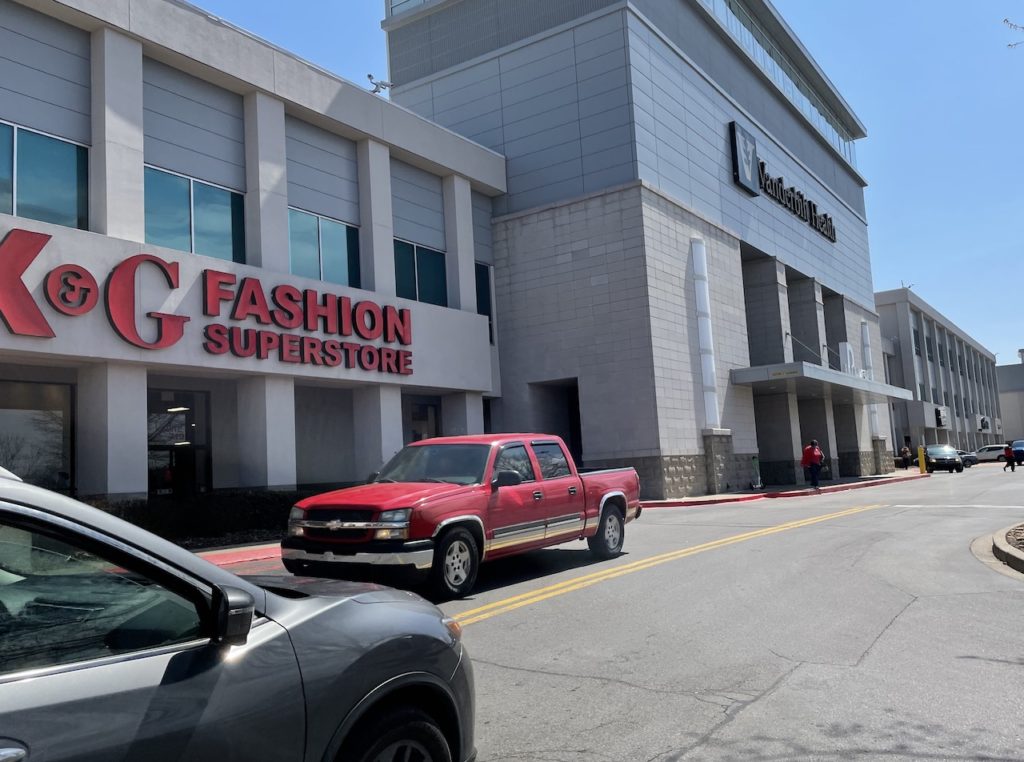
The hulking Hickory Hollow Mall — a full 1.1 million square feet of retail space in southeast Nashville — was once the largest shopping center in Tennessee. But like dozens of malls, it’s been in a downward death spiral for more than a decade — despite a scrappy revival effort.
Now, the mammoth complex surrounded by acres of parking is on track to join the ranks of malls making a transition into medicine.
“The possibilities for service offerings in a facility of this scale are endless,” said Dr. Jeff Balser, CEO of Vanderbilt University Medical Center, at the announcement in March.
Vanderbilt is already an early adopter in the mall-to-medicine concept, though Jackson Medical Mall in Mississippi, founded by Dr. Aaron Shirley in 1996, was way ahead of its time. In Vanderbilt’s case, the academic health system took over its first mall, One Hundred Oaks, and started seeing patients in 2009. Now, the suburban shopping complex houses 22 specialty clinics in nearly a half-million square feet. Some big-box retailers remain on the ground floor with exterior entrances. But the inside is mostly medicine run by Vanderbilt Health.
A total of 32 enclosed malls have moved to housing health care services, according to a national database kept by Georgia Tech urban design professor Ellen Dunham-Jones. Nearly a third of them were announced since the start of the pandemic.
The more recent additions, with some still in the planning stages, dot the U.S. map. They range from Helena, Montana’s 13-acre Capital Hill Mall being redeveloped by Benefis Health System with primary care and specialty clinics to Alexandria, Virginia, where Inova Health System is building a billion-dollar mixed-use development on the 51-acre Landmark Mall site, complete with a hospital and trauma center.
The lockdowns brought by COVID — both required and voluntary — pushed many brick-and-mortar retailers who were already on the brink fully out of business. But medicine’s reuse of retail space is more than pandemic opportunism, according to the Harvard Business Review. Three authors suggest the rise of telemedicine and continued push to outpatient procedures will make malls increasingly attractive sites of care.
Plus, some dead malls like Hickory Hollow are in diverse neighborhoods that need increased access to health services. The surrounding zip codes had Nashville’s highest rates of COVID infection early in the pandemic and they have some of the lowest rates of primary care visits, according to Vanderbilt.
“Pre-pandemic trends, coupled with public health realities that the pandemic has made more apparent, suggest that hospitals will increasingly need to reimagine their future,” the Harvard Business Review authors wrote in November.
What big-city health systems need most is something shopping malls have in spades.
“Malls are pretty convenient,” Dunham-Jones said, with a laugh. Most are flush with parking spots and close enough to be seen by drivers on major highways and interstates.
When retiree Jennifer Johnson moved to Nashville to be closer to her grandchild, her family warned her — don’t see a doctor at Vanderbilt’s main campus. She had to anyway.
“It’s a zoo. First, you get to drive through the maze of the parking garage which is under construction. Then, you try to find out which elevator you’re going to get to, get to what floor you’re going to get to. Here,” she said, waiting on her ride after an appointment at One Hundred Oaks, “you can go straight up the escalator and straight down the hall — easy peasy.”
Despite their size and age, malls are fairly easy to navigate compared to many hospitals. In Charleston, the Medical University of South Carolina’s mall location uses football yardage marked on the floor to help patients find the right clinic.
By contrast, many hospital campuses confound patients. Vanderbilt’s main site in the West End area of Nashville has been expanded two dozen times since the first building was constructed in 1925.
“Most of these hospitals are in areas where there’s just no room to grow. And if you do, it’s so expensive,” said Andrew McDonald, a former hospital administrator who leads health care consulting for LBMC. “These buildings are old. They’re antiquated. They’re very expensive to maintain.”
Malls, McDonald said, make for a nice fit, at least for big health systems. They can essentially move everything short of the ER and ICU — including surgery and imaging centers — and have them together under one sprawling roof. If someone needs an MRI, it’s right beyond the food court.
“It just creates a whole lot more efficient flow for the patient going through the health care system with whatever infirmity they may have,” he said.
Suburban shopping malls also make sense because the suburbs are aging. They’re no longer filled primarily with the young families who first flocked to the planned neighborhoods and shopping centers that were built in the 1970s.
“Those families, the adults are still in the suburbs but the kids have long since grown and fledged, and they’re pretty heavy-duty health care consumers,” Dunham-Jones said.
The mall locations remain desirable, she added, just not for the same style of retail. But there are only so many businesses that can use a half-million square feet.
The hulking Hickory Hollow Mall, where Vanderbilt is trying its second dead mall revival, has been mostly empty for years, which makes no sense to resident Ricky Grigsby. The area around the mall is otherwise booming.
“It’s been sitting there for years. It’s a waste of time,” he said. “I mean, somebody needs to do something with it. It could be jobs for somebody.”
The plan is to create an employment pipeline for medical technicians from Nashville State Community College, which already has a campus in what used to be a Dillard’s department store.
As for Grigsby, he just retired from Vanderbilt after a career spent managing surgical instruments for busy operating rooms on the main campus. Now, he’s a patient along with everyone else, looking for a more convenient place to receive care.

